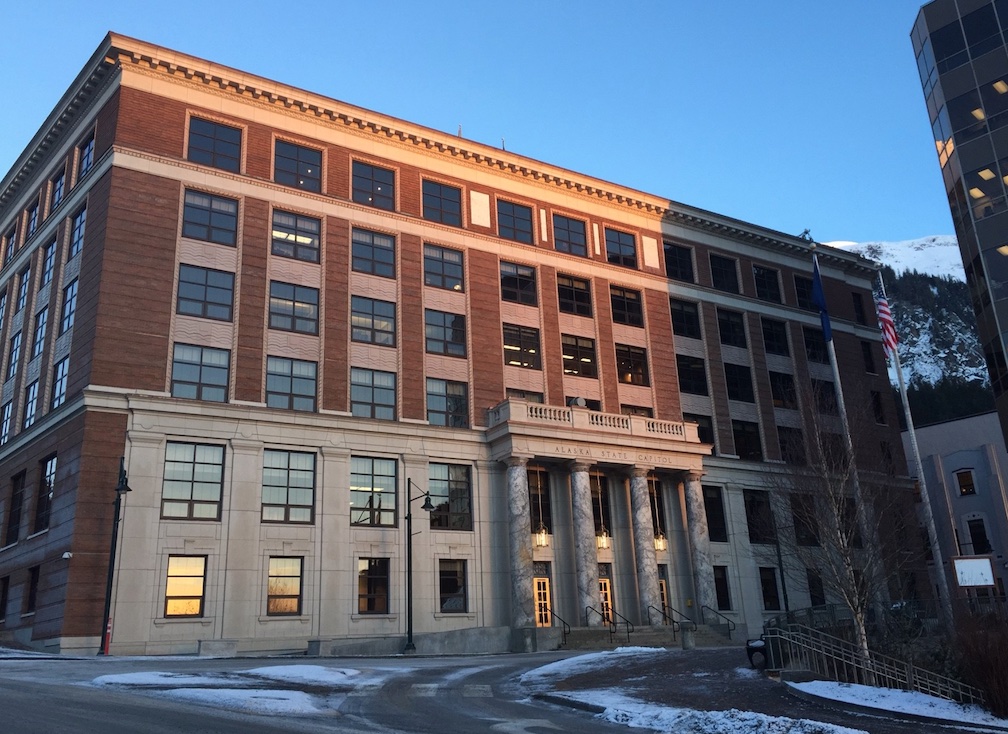With the Alaska State Officers Compensation Commission generating a lot of drama between the Governor’s Office, the Senate, and House this legislative session, the House Majority found some improvements that could be made to the process so that the game of hot-potato isn’t repeated in the future.
House Bill 140 is a policy bill offered by the Rules Committee to improve the journey that compensation changes take as they are occasionally calculated for the Legislature, commissioners, governor and lieutenant governor. The bill is set for its first hearing in House State Affairs on Thursday at 3 pm.
The tweaks are intended to bring more transparency and less drama to the compensation commission process. One change would be that the commission would meet only once every two years. Any changes recommended would not take effect until the next Legislature is seated. And some of the timing and deadlines for the commission’s meetings and reports are changed. The commission’s salary review, for example, would need to start by Nov. 1, rather than Nov. 15, so the legislature would have more time to review and respond.
Current statute says the commission can’t start prior to Nov. 15 on any year and has to have the recommendations within the first 10 days of session. The Legislature must take any action within 60 days of receipt of the report. HB 140, as introduced, says the commission has 30 days to submit a report and the Legislature has 90 days to act.
Earlier this month, the state salary commission recommended a 67% pay raise for legislators, and a 20% pay raises for the governor, along with raises for the cabinet, whose members are often paid less than the people who report to them. It all happened quickly after the governor had replace five members of the compensation commission. The commission that had been seated earlier had recommended no pay increases.
Legislators have not had a pay increase since 2010, and are making just $50,400 per year. The governor makes less actual dollars than Gov. Mike Stepovich made in 1960. Stepovich made $25,000 a year. Gov. Mike Dunleavy’s salary is $145,000, nearly $100,000 less than what it would be if the original governor’s salary set at statehood kept up with inflation.

While we’re on the subject of compensation, the state should do geographical differential survey – they’re supposed to be reviewed every five years per statute and they’re not. It looks like the last time they were looked at was 2008.
‘https://doa.alaska.gov/dop/fileadmin/gds/frontCoverTOC.pdf
No raises until a hard requirement to be done in 90 days.
What Dunleavy’s people did was illegal. They met in secret- keeping the public in the dark. As bad, legislators are supposed to meet and get their job done in 90 days, or less, as the voters have instructed. Legislators will now get a massive pay raise for what is supposed to be a part time gig.
They all suck.
Regardless of inflation 🙁 Where is the Sacrifice ! The National Conference of State Legislatures (NCSL) classifies state legislatures as full-time, part-time, or hybrid. The information below is based on NCSL’s last report published on July 28, 2021.[4]
Full-time states have legislators who devote 84 percent of a full-time job to their legislative duties which include committee hearings, listening sessions, constituent service, and time spent campaigning. On average, each full-time legislator is paid about $82,358.[4]
Hybrid states have legislators who devote 74 percent of a full-time job to their legislative duties. Legislators estimate they spend more than two-thirds of a full-time job on their legislative duties. On average, each hybrid legislator is paid about $41,110.[4]
Part-time states have legislators who devote 57 percent of a full-time job to their legislative duties. On average, each legislator is paid about $18,449. These are also called “traditional or citizen legislatures” and the legislators typically need additional sources of income outside the legislature to make a living.[4]
Question , aren’t our Legislators PART TIME ? Generally none of our Legislators spend more then 25% by Law 90 days , to 33% at it! 5 months at best! No more pay until they fix the overspending
The question that might be asked is whether Big Mike able to fill Mike Stepo’s shoes? ? is that a consideration when talking about compensation? Just wondering…
67% is a big jump especially in our current economic times. The private sector certainly are not receiving any pay raises even a fraction of this amount. Are housing costs and other compensation included in the $50K?
Add in $307 for per diem, or $27,630 for a 90 day session or $36,840 for a 120 day session and the pay is somewhere $78,030 to $87,240 for a 3-4 month job that they volunteered for and ran to get. Plus moving expenses to and from Juneau for each session. Our legislators are already paid in the top 5 nationwide.
Comments are closed.